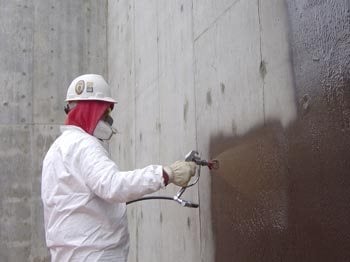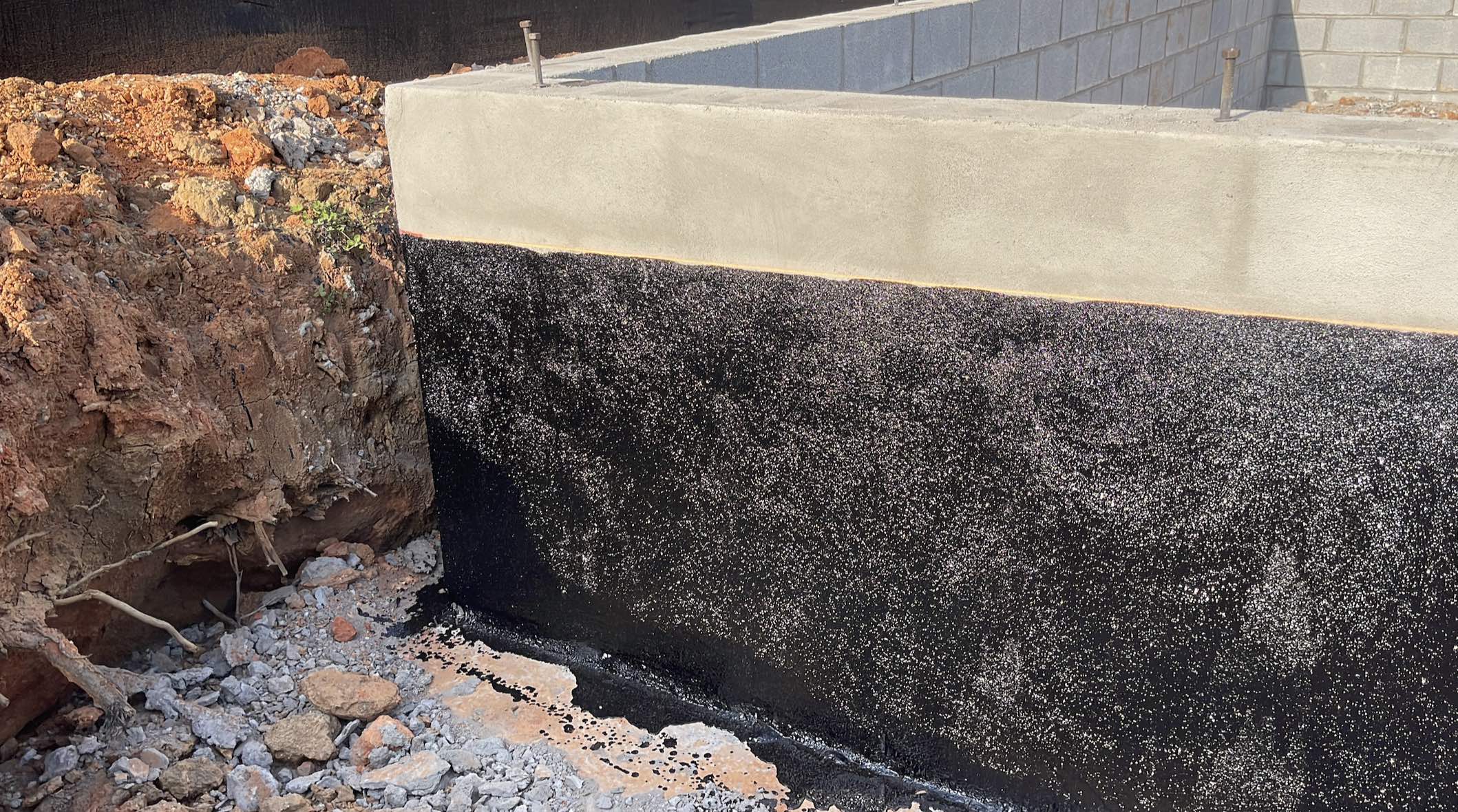The ultimate guide to mould treatment newcastle: What to expect from start to finish
The ultimate guide to mould treatment newcastle: What to expect from start to finish
Blog Article
Discovering the Different Methods and Solutions for Effective Damp Proofing
Wetness in buildings postures substantial challenges to both structural stability and interior air high quality. Different strategies and options have arised to combat this pervasive problem. From conventional damp-proof membranes to ingenious chemical treatments, each method provides unique benefits. Comprehending these options is vital for efficient dampness control. Choosing the best option depends on certain building conditions and requirements, triggering more expedition into the most effective wet proofing methods readily available.
Recognizing the Root Causes Of Moisture
Although moisture can emerge from various sources, recognizing these causes is vital for reliable remediation. Generally, moisture stems from three key sources: increasing moist, penetrating damp, and condensation. Increasing damp occurs when groundwater travels up-wards with porous materials, such as brick or stone, typically because of an absence of an efficient barrier (damp specialist newcastle). Passing through moist is usually triggered by external factors, consisting of roof leaks, faulty rain gutters, or harmed walls, permitting water to infiltrate a residential property. Condensation, on the various other hand, arises from excess wetness airborne, frequently aggravated by poor air flow and temperature differences, causing water beads basing on surfaces. Identifying these underlying issues is vital, as each sort of dampness needs a tailored technique for removal. Appropriate assessment aids in figuring out the most reliable remedies, inevitably securing the structural honesty of a structure and enhancing indoor air high quality
Standard Damp-Proof Membranes

Chemical Damp-Proofing Solutions
Chemical damp-proofing remedies provide an ingenious method to preventing dampness invasion in buildings. These techniques generally involve the application of fluid chemicals that pass through stonework and develop a barrier against climbing wet. Frequently utilized chemicals consist of silanes, siloxanes, and other water-repellent agents that respond with surface area products to produce a hydrophobic layer.The application process generally needs boring openings into the wall surfaces, infusing the chemical remedy, and permitting it to treat. This technique is specifically helpful for older frameworks where typical damp-proof membrane layers may be not practical. Chemical damp-proofing can be much less disruptive and extra cost-effective than substantial improvement projects.While effective, these solutions depend on correct application and ecological problems for peak efficiency. mould removal newcastle. Regular maintenance and monitoring are vital to ensure the durability of the damp-proofing therapy. In general, chemical damp-proofing represents a versatile option for safeguarding structures versus moisture-related damages
Dental Caries Wall Surface Building Methods
Cavity wall construction strategies offer countless advantages, especially in moisture control and power efficiency. By incorporating an air space between two layers of masonry, these walls properly minimize water access while improving insulation. This mix not only protects structures from dampness yet likewise adds to decreased energy consumption.
Benefits of Tooth Cavity Wall Surfaces
When thinking about reliable damp proofing techniques, the benefits of cavity wall surfaces stick out plainly. Tooth cavity walls include two different layers, developing an air space that efficiently lowers wetness penetration. This style decreases the threat of moisture, as the outer wall acts as an obstacle against rainfall and water access. In addition, tooth cavity walls improve thermal insulation, which adds to energy performance by minimizing warmth loss. They likewise give audio insulation, assisting to create a quieter interior environment. The air space permits for air flow, which aids in dampness control and decreases the likelihood of mold and mildew development. These advantages not only boost the total convenience of a building yet additionally add to its long life and structural honesty.
Dampness Control Techniques
Effective wetness control techniques are critical in cavity wall surface building and construction to ensure lasting defense versus wetness. One key approach entails the incorporation of weep holes, which facilitate water drainage from the cavity, avoiding build-up. Additionally, the use of breathable membranes can help take care of moisture levels while allowing entraped vapor to get away. Correct placement of insulation is likewise vital, as it ought to not obstruct water drainage courses. Making certain that the outer fallen leaves of the tooth cavity wall surface are built with water-resistant products boosts general resilience. Routine maintenance checks are necessary to identify any kind of obstructions or damages early, protecting the framework's stability. Inevitably, a mix of these methods develops a durable defense against wetness intrusion in dental caries wall surfaces.
Insulation and Power Effectiveness
Insulation plays an essential duty in improving energy effectiveness within cavity wall surface building. By integrating shielding products, these wall surfaces create a thermal barrier that reduces warm loss and reduces energy intake. Reliable insulation not only assists keep a secure interior temperature level but likewise alleviates the threat of moisture, as it prevents condensation within the wall cavity. Different strategies, such as using inflexible foam boards or mineral wool, can be employed to accomplish ideal insulation performance. Additionally, correct installation is necessary to assure that spaces and voids are decreased, which can otherwise endanger energy effectiveness. Eventually, a well-insulated dental caries wall surface contributes considerably to general sustainability and lowers heating and air conditioning expenses for homeowners.
Exterior Damp Proofing Approaches
Exterior wet proofing methods are crucial for protecting frameworks from moisture infiltration. Two efficient strategies include the application of water-proof membrane layers and the setup of French drains pipes. These remedies aid alleviate water build-up and maintain the integrity of buildings.
Waterproof Membrane Layer Application
While numerous methods exist for avoiding moisture access, the application of water-proof membranes remains a highly reliable outside damp proofing strategy. These membrane layers are generally made from products such as polyethylene, rubber, or changed bitumen, giving a durable obstacle against water penetration. The setup procedure entails applying the membrane layer to the outside surfaces of walls or structures, making sure total coverage to stop leakages. Proper bond and securing at joints website are essential to taking full advantage of effectiveness. Waterproof membrane layers can be applied in numerous types, including fluid layers and sheet membrane layers, permitting for versatility based upon the particular requirements of the structure. This method not only protects buildings from wetness however also boosts their long life and structural stability.
French Drain Setup
One reliable technique for managing groundwater and protecting against wetness accumulation around a building's foundation is the installation of a French drain. This water drainage system includes a trench full of crushed rock and a perforated pipe that reroutes surface water away from the foundation. Correct installation calls for careful preparation, making certain that the drain inclines far from the framework to facilitate suitable water flow. Additionally, the place of the drain is crucial; it should be positioned in locations prone to pooling or excess moisture. Routine upkeep, including clearing particles from the gravel and making certain the pipeline remains unblocked, is crucial for long-term effectiveness. Eventually, a well-installed French drainpipe can significantly decrease the danger of water-related issues in cellars and structures.
Inside Waterproofing Strategies
Inside waterproofing strategies are crucial for protecting a building's inside from moisture infiltration and prospective water damage. These methods usually entail the application of specific products and techniques created to produce a moisture barrier within the framework. One typical strategy is making use of waterproof coverings or sealers on wall surfaces and floors, which avoid dampness from permeating surfaces.Additionally, setting up interior water drainage systems, such as sump pumps, can properly manage water build-up in basements and crawl areas. An additional technique entails the usage of vapor barriers, which are installed to inhibit dampness motion from the ground right into living spaces.Moreover, resolving any kind of splits or spaces in wall surfaces or structures with appropriate sealants assures a thorough defense versus water invasion. By applying these interior waterproofing methods, homeowner can greatly decrease the danger of mold and mildew development, architectural damage, and various other moisture-related concerns. Correct execution of these methods is essential for long-term protection and structure integrity.
Regular Maintenance and Examination Practices
Regular maintenance and inspection practices are vital for guaranteeing the lasting efficiency of wet proofing options in any kind of building. Routine checks allow homeowner to recognize very early indications of wetness invasion, such as peeling paint, mold and mildew development, and moldy smells. These indications can signify underlying concerns that call for immediate attention.Inspections need to be performed a minimum of annually, focusing on susceptible areas like basements, crawl spaces, and exterior wall surfaces. During these analyses, property owners must check out sealers, drainage systems, and ventilation to confirm they function correctly.Additionally, keeping gutters and downspouts is necessary, as clogged systems can cause water build-up near the foundation. Executing a regular maintenance schedule, together with prompt repairs, can considerably prolong the lifespan of moist proofing measures and protect the architectural honesty of the structure. Positive actions inevitably add to the total health and safety and security of the living setting.
Often Asked Questions
The Length Of Time Does Damp Proofing Commonly Last?
The duration of moist proofing performance differs, normally lasting between 20 to half a century. Factors such as application top quality, environmental conditions, and maintenance practices considerably affect the long life of the wet proofing treatment.

Can I Damp Evidence My Home Myself?
The individual contemplated the expediency of do it yourself damp proofing. With proper research study and the right materials, it is feasible. They also identified the importance of professional guidance to ensure resilient performance and prevent future concerns.
What Are the Indications of Inadequate Damp Proofing?
Indicators of ineffective moist proofing consist of relentless mildewy odors, noticeable mold and mildew growth, peeling paint, moist patches on walls, and wood decay - damp removal newcastle. Home owners must address these problems immediately to avoid more damages and health and wellness concerns
Does Damp Proofing Affect Indoor Air High Quality?

How Much Does Professional Damp Proofing Price?
Expert damp proofing costs differ significantly, normally ranging from $1,000 to $5,000 relying on the residential or commercial property's size, the degree of the moist issue, and picked methods. Each scenario calls for a customized assessment for precise pricing. Generally, dampness originates from three key resources: rising wet, permeating damp, and condensation. When thinking about reliable moist proofing techniques, the benefits of tooth cavity walls stand out prominently. External moist proofing approaches are crucial for shielding frameworks from moisture infiltration. While different techniques exist for protecting against wetness access, the application of water-proof membrane layers stays a highly reliable outside damp proofing technique. Indications of ineffective wet proofing consist of persistent moldy smells, noticeable mold and mildew development, peeling off paint, moist patches on wall surfaces, and wood degeneration.
Report this page